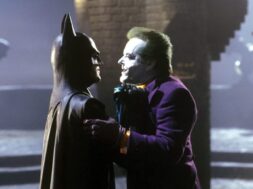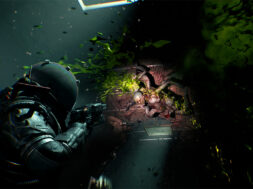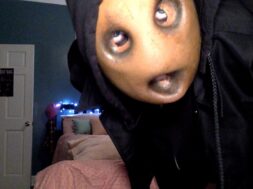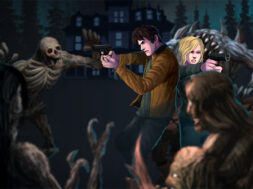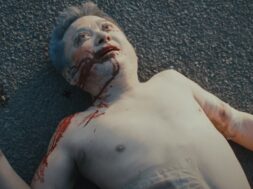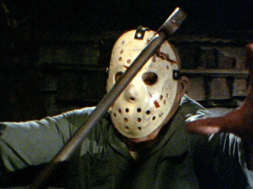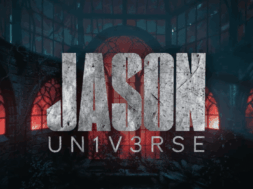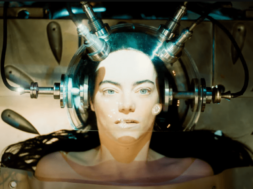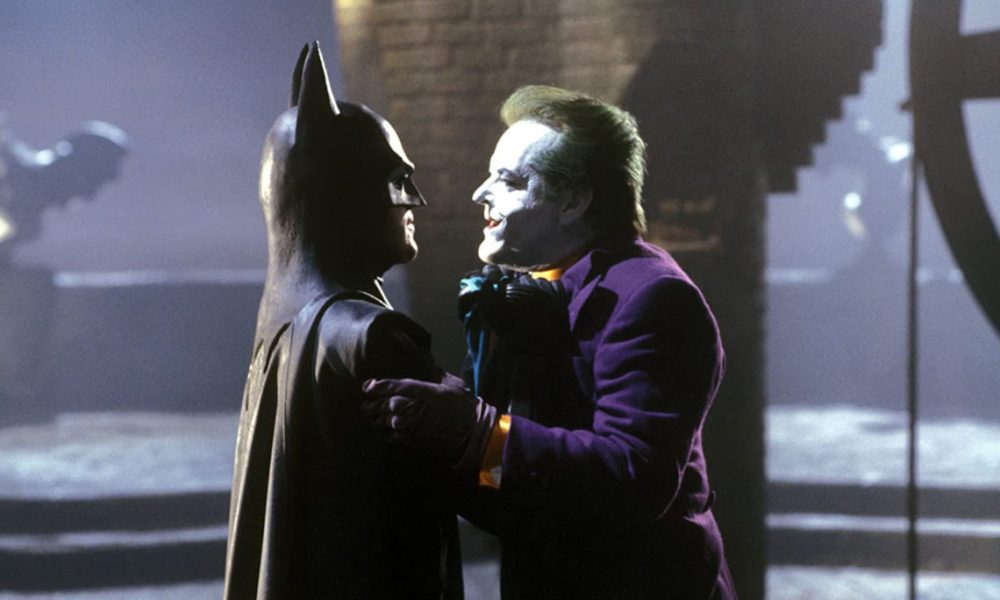
It’s baffling just how easy it is to take a good movie for granted after watching it so many times that its success appears to have been inevitable. And while seeing your work become a household name seems like an artist’s greatest achievement, it’s a shame that this process can sometimes overshadow the weird and risky choices that made these projects so unique.
A great example of this is Tim Burton’s Batman duology – two wildly popular films that a lot of people forget were actually deeply strange productions which almost certainly couldn’t have been made today. And in honor of Batman’s 85th Anniversary Event, today I’d like to look back on Burton’s only foray into comic-book adaptations and reevaluate these films as I believe the director always intended: as expressionist monster movies.
It’s no secret that the character of Batman has always been influenced by the horror genre (his villains are literally kept in H.P. Lovecraft’s Arkham Asylum, for crying out loud), and though the Caped Crusader himself exhibits plenty of classic horror tropes in his presentation, everyone knows that it’s the freakish villains that make Batman stories so fascinating.
Tim Burton clearly thought so too. Hot off the success of Beetlejuice, the director was hired by Warner Bros. once he proposed a radically different take on the source material – likely the result of him only really being familiar with then-recent comics like The Dark Knight Returns and The Killing Joke. Partnering with screenwriter Sam Hamm (who would later pass on his writing duties to Warren Skaaren), Burton decided that focusing on the Bat’s colorful adversaries and the city of Gotham itself would make for a more entertaining experience than trying to get into the headspace of a larger-than-life character.
Rewatching the ’89 film (which I had the pleasure of seeing on the big screen for the first time thanks to the Anniversary Event), I realized something that child-me never noticed: both Batman and Bruce Wayne are absent for shockingly long stretches of the film’s runtime. Burton was clearly more interested in setting up a deeply atmospheric crime drama about a ruthless mobster who is both literally and figuratively pushed over the edge and turned into a freak of nature, with this reborn monster proceeding to lash out against the city that made him.
From Joker/Jack Napier’s acid-scarred hands emerging from toxic chemicals to the gimmicky deaths to which he subjects his victims, Jack Nicholson is clearly meant to be portraying an old-timey movie monster here. Even the character’s reveal at the underground surgeon is the stuff of genre legend, harkening back to classic horror movies about disfigured icons like The Phantom of the Opera (with Burton even shouting out French horror classic Eyes Without a Face with Alicia Hunt’s tragic character). And while it wasn’t yet widely publicized that DC’s Joker was inspired by Conrad Veidt’s grinning protagonist in the 1928 expressionist drama The Man Who Laughs, Burton had already made the connection long before this bit of comic-book trivia hit the mainstream.

“Have you ever danced with the Devil in the pale of moonlight?”
I feel like this acceptance of the Clown Prince of Crime as the true star of the show is what makes the film so memorable, with Michael Keaton taking a more reserved and mysterious approach to his character in order to allow Nicholson to shine. In fact, the actor has gone on record saying that this was one of his all-time favorite roles as the character allowed him to let loose creatively.
That being said, I appreciate how Burton also chooses to depict Batman himself as an illusive figure with a backstory only vaguely revealed through flashbacks. I might not be onboard with the director’s decision to make Jack Napier the one who killed his parents, but I find it fascinating how the film has us observe Wayne from the outside in, with Vicki Vale being the actual point-of-view character as she investigates what basically amounts to a living urban legend that descends on criminals like an urban Dracula.
Sure, the film is technically a poor adaptation of the comic-books, making Batman into a killer and ignoring crucial parts of the character (like his detective work), but the idea that Batman and Joker are ultimately two sides of the same coin is one of the most quintessentially Batman things imaginable. Burton himself has described the film as a long-winded “duel of the freaks” between two disturbed individuals, which is why I still love this movie despite – or because perhaps because of – its irreverence towards the source material.
It’s strange to think that this perfect storm of unorthodox casting, anachronistic art direction and a horror-obsessed filmmaker would become such a massive hit, but I’d argue that things get even stranger when we reach the flick’s 1992 sequel.
If the influences behind the 1989 movie can be described as 50% comic-books and 50% Tim Burton, Batman Returns is about 99% Burton. An infamous oddball of a movie, this sequel was so dark and STRANGE that it ultimately resulted in the studio taking a more kid-friendly approach with its follow-ups. After all, they soon realized that monster movies disguised as superhero flicks were more likely to traumatize kids than entice them to purchase a Happy Meal.
And while Batman Returns was one of my most-watched VHS tapes as a child (I actually prefer it to the original film), I can understand where the suits were coming from. Danny DeVito’s Penguin is one of the most grotesque comic-book villains ever depicted on-screen – which was purely Burton’s decision, as no version of the character had ever looked like that before – and the decision to make the main antagonist an original creation satirizing corrupt businessmen-turned-politicians feels refreshingly ahead of its time.

A slap in the face of franchise filmmaking!
Again, Burton’s genre love is on full display here, with the director incorporating plenty of monstrous practical effects as he brings a wintertime Gotham City to life without losing any of its gothic charm. The director fought for full creative control the second time around, which means that the sequel incorporates even more classic Burtonisms like monochromatic costume designs and German Expressionist aesthetics combined with creature feature storytelling.
Somewhat paradoxically, the film’s Christmas elements tie the whole spooky package together, with Batman Returns entering production around the same time as Henry Sellick’s The Nightmare Before Christmas – a movie that Burton only oversaw from a distance but which still shares much of the same genre DNA. Hell, both projects even share some of the same freaky toy designs, as well as some of Danny Elfman’s iconic soundtrack.
And like the previous film, Burton once again chose to focus on the Rogue’s Gallery rather than Batman himself, with the Caped Crusader taking quite a while to show up and having much less impact on the story than his villainous peers. Any other director would have ended up with boring slog of a film, but by transforming Penguin into a tragic mutant and Catwoman into a Bride-of-Frankenstein-inspired revenant (as well as casting Christopher Walken in a role inspired by the monstrous star of Nosferatu), Burton gifts us with yet another bizarrely entertaining freakshow.
The film is also weirdly sexual, with everything from Michelle Pfeiffer’s haphazardly-stitched suit and her love/hate relationship with Bruce to Penguin’s animalistic demeanor coming off as way too horny for what was always meant to be a family film. I feel that this aspect of the story was at least partially inspired by Frank Miller’s controversial opinion that Batman sublimates his sexual urges through violence – another quintessential genre trope that I think applies to nearly every character here.
I understand that these movies aren’t for everyone and nostalgia plays a huge part in how we revisit so-called classics, but I also honestly believe that the level of creativity present in both Batman and Batman Returns is still under-appreciated today. These movies tricked us into thinking that we were walking into blockbuster action flicks and instead left a mark with tragic stories about men becoming monsters and battling their inner trauma against an expressionistic backdrop.
We’ve seen bigger and (debatably) better Batman adaptations in the years since Burton partnered with DC, but with the 85th anniversary of the character coinciding with spooky season, I’d urge you to rewatch these two classic monster movies and appreciate them as their own unique experiences.

The post “A Duel of the Freaks” – The Monster Movie Madness of Tim Burton’s ‘Batman’ Films appeared first on Bloody Disgusting!.
